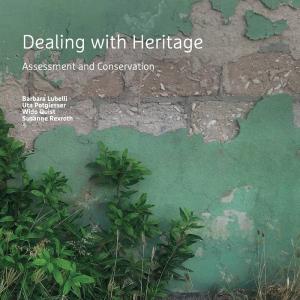Hosted by
Dealing with Heritage: Assessment and Conservation
Synopsis
It is an honor to introduce this book, which brings together a number of very important aspects of the restoration architect's profession, with this short statement.
Dealing with heritage requires that the restoration architect makes well-considered and definable choices. It should not only be about conservation, but attention must and may also be paid to making heritage future-proof. When it comes to making heritage future-proof, we still stand at the start of a major (sustainability) transition, in which making interventions will be indispensable. Such interventions are made possible by recognizing and utilizing the opportunities that heritage offers, but they should always be made from a view that places the preservation of the core values of the heritage centrally.
The core values of heritage take many forms and can range from physical architectural manifestations to social, cultural and historical significance. In all cases, they involve dealing with the materials that the heritage is composed of. Having knowledge of these materials plays a crucial role in the choices to be made, both in the area of conservation to preserve what already exists, as well as in choices for restoration, improvement or renewal. That this knowledge goes beyond the physical outward appearance, as perceived by the admirers of heritage, is also emphasized by the examples in this book. Knowledge of the substance, forms of decay, methods of conservation and application of new techniques requires research, and without this research we as restoration architects would never be able to make well-considered choices.
Research into especially the 'invisible' damage phenomena in materials, as described in this book, still requires more attention. As certified restoration architects it is our task to recognize this, to call in specialists at an early stage of a project, and to consider options with as broad a team as possible. The methods with which to determine the degree of damage and decay as objectively as possible, as are being developed continuously by among others 'Heritage & Architecture' at Delft University of Technology, offer good tools.
I am a restoration advisor and currently chairman of the ‘Vereniging van Architecten Werkzaam in de Restauratie’ (Association of Architects Working in Restoration, VAWR), an association whose members are specialists who have all chosen to be tested and recognized in the field of dealing with monuments. On behalf of our members I would like to draw attention to the specific mastery of our profession based on Knowledge, Ethics, Vision and Management. Much attention is drawn to precisely these four pillars in this book as well. I hope that the readers of this book, regardless of their background, will gain a great deal of knowledge and appreciation for the need for research, but above all that they will also become more interested in our beautiful and multifaceted profession.

